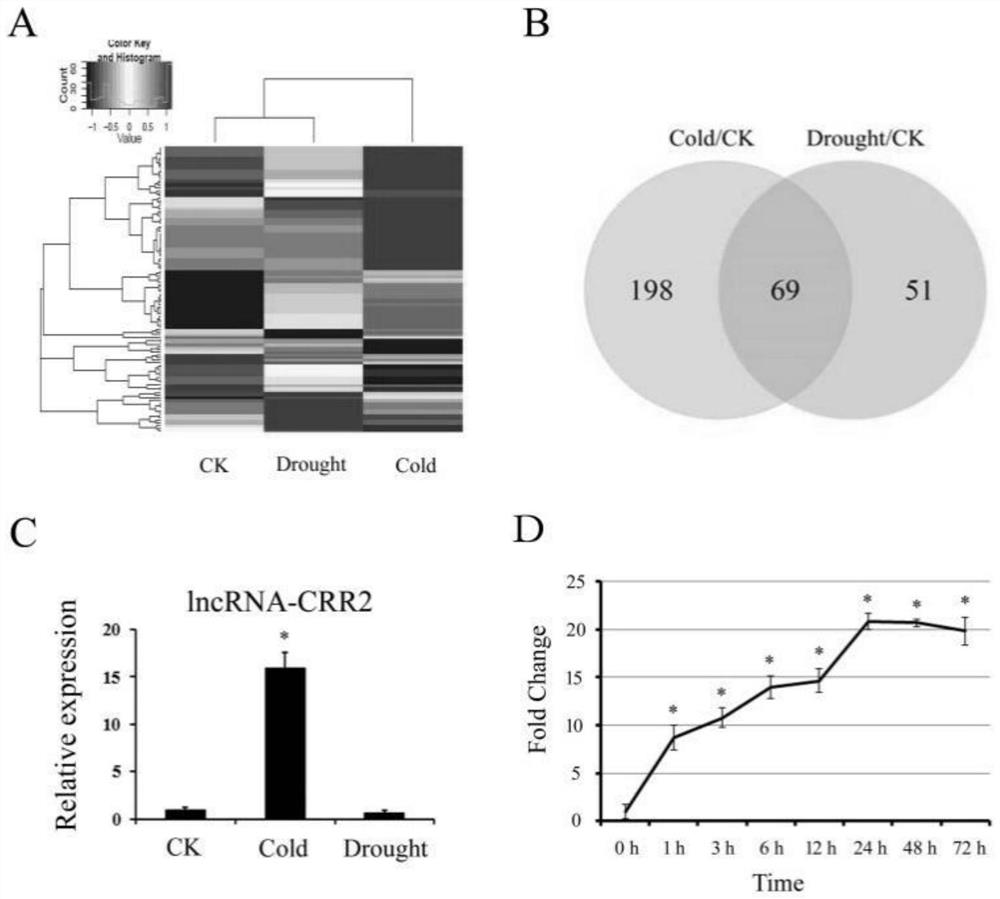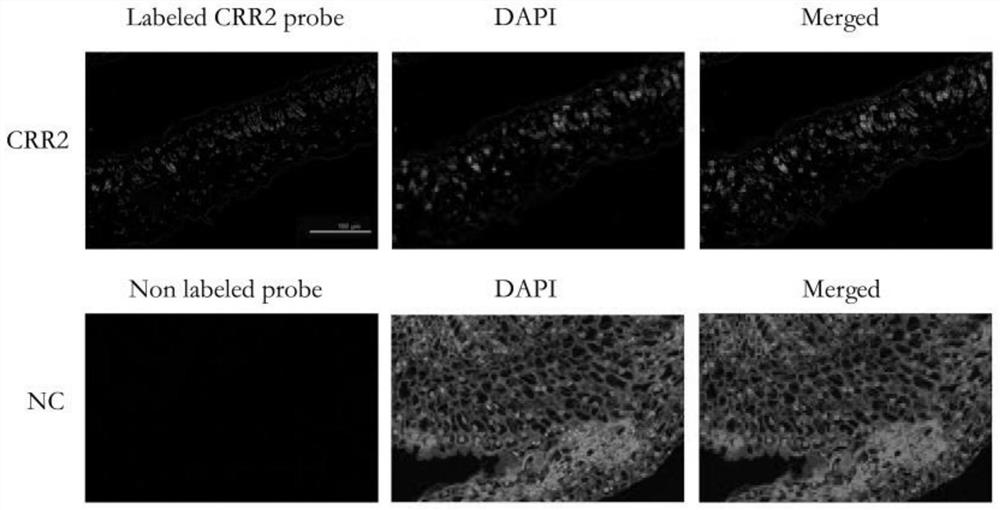RNA for improving low-temperature tolerance of plants and application thereof
A low temperature tolerance, plant technology, applied in the direction of DNA / RNA fragments, applications, plant peptides, etc., can solve the problems of lack of cassava low temperature resistant cultivars, long breeding cycle, affecting cassava yield and quality, etc.
- Summary
- Abstract
- Description
- Claims
- Application Information
AI Technical Summary
Problems solved by technology
Method used
Image
Examples
Embodiment Construction
[0021] Referring to the accompanying drawings, the present invention will be further described in conjunction with specific embodiments, so as to better understand the present invention. If no specific technique or condition is indicated in the examples, it shall be carried out according to the technique or condition described in the literature in this field or according to the product specification. The reagents or instruments used were not indicated by the manufacturer, and they were all commercially available conventional products.
[0022] 1. Acquisition of CRR2 gene
[0023] Total RNA was extracted from the leaves of cassava variety TMS60444, cDNA obtained by reverse transcription of PolyT was used as template, and CRR2-S primer: GGATCCAAATTTAACACGGTTGATTCAC and CRR2-A primer: GTCGACTCGGGATTCACTTTACCTTCTAG were used as primers to amplify the CRR2 gene by PCR method. Its sequence is shown in SEQID No: 1 (with restriction endonuclease cutting sites of BamH I and Sal I).
...
PUM
 Login to View More
Login to View More Abstract
Description
Claims
Application Information
 Login to View More
Login to View More - R&D
- Intellectual Property
- Life Sciences
- Materials
- Tech Scout
- Unparalleled Data Quality
- Higher Quality Content
- 60% Fewer Hallucinations
Browse by: Latest US Patents, China's latest patents, Technical Efficacy Thesaurus, Application Domain, Technology Topic, Popular Technical Reports.
© 2025 PatSnap. All rights reserved.Legal|Privacy policy|Modern Slavery Act Transparency Statement|Sitemap|About US| Contact US: help@patsnap.com



